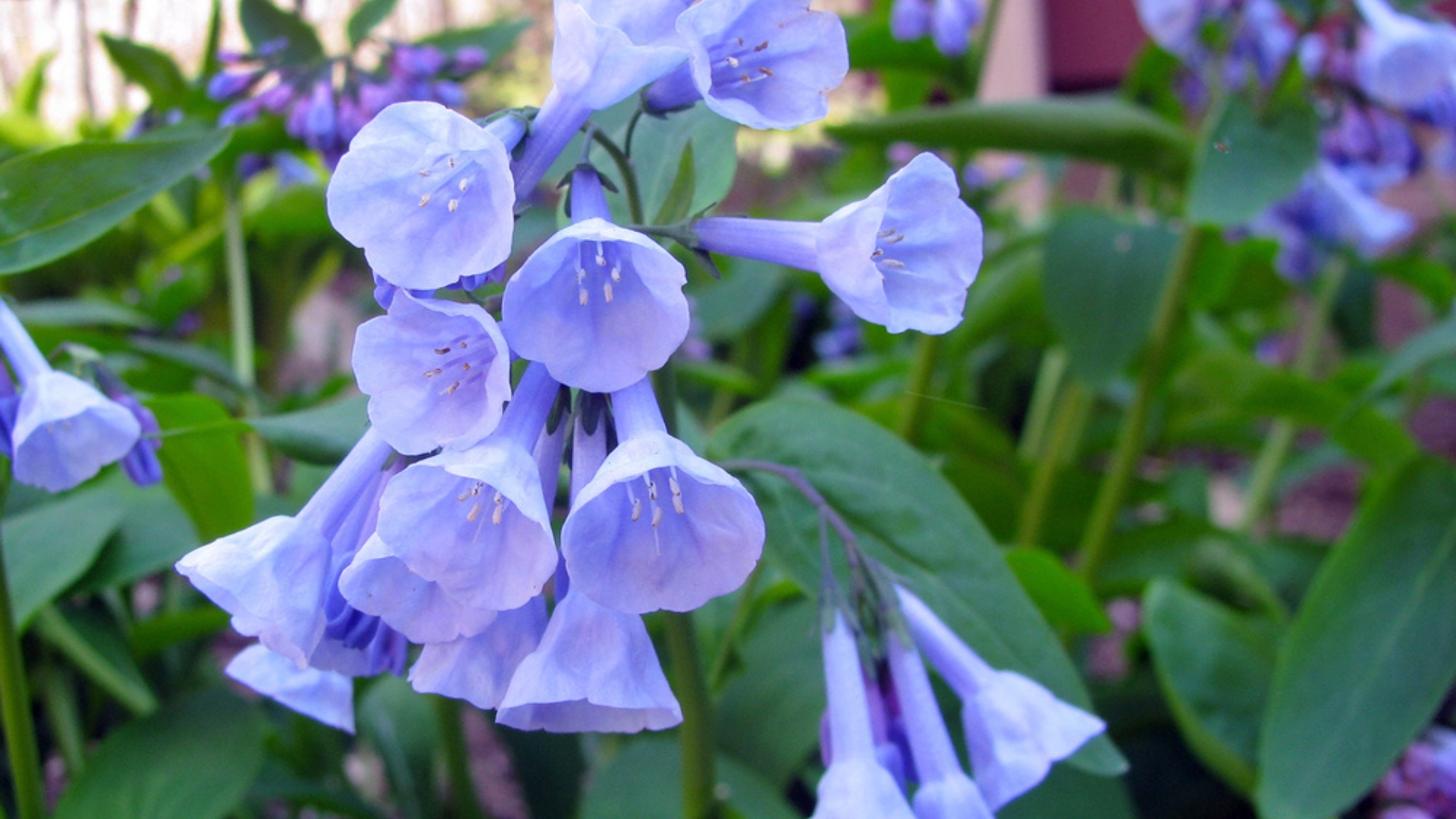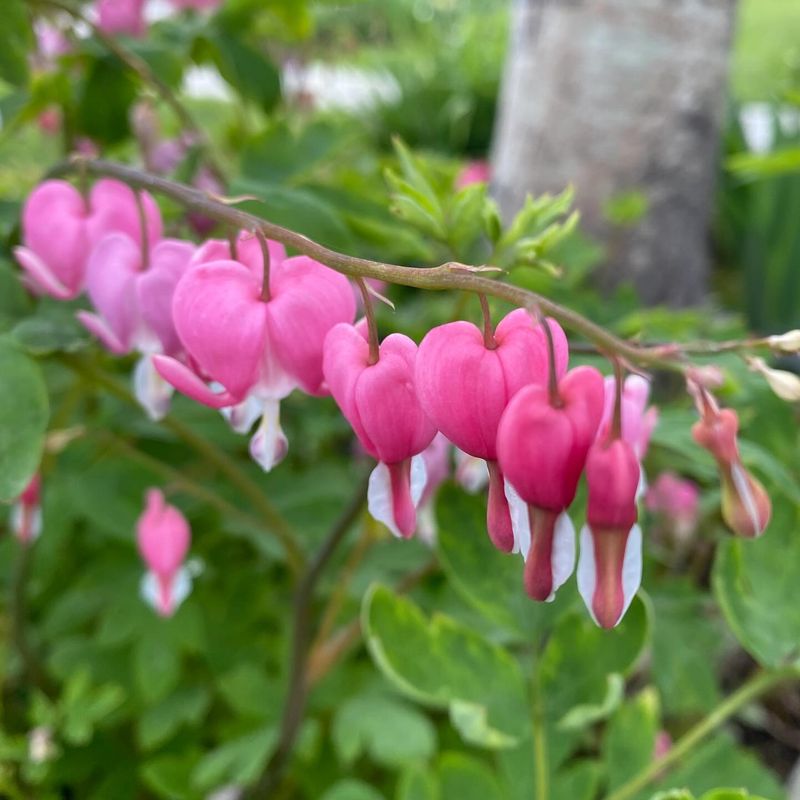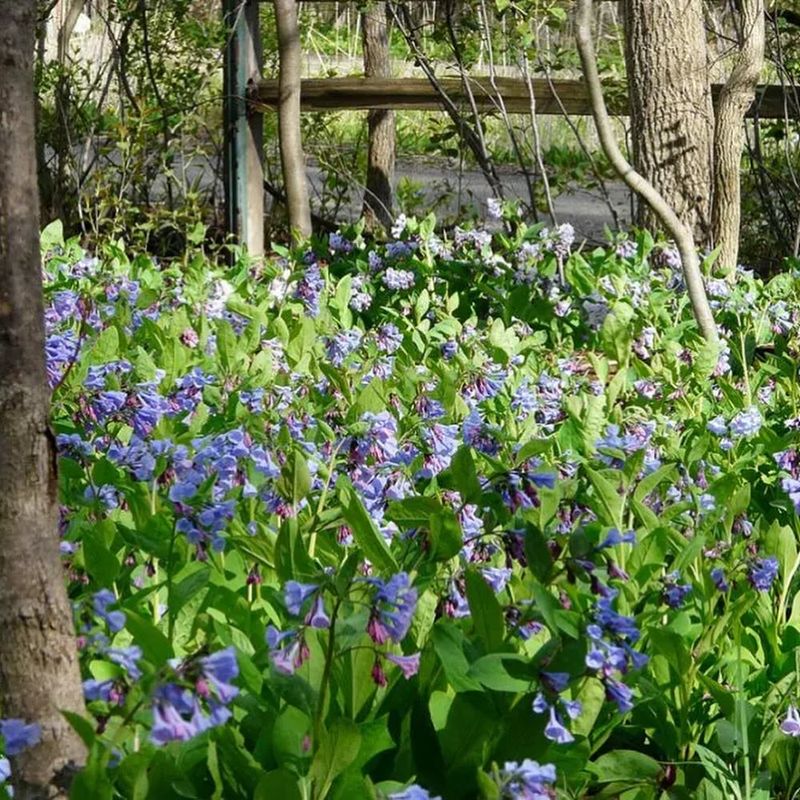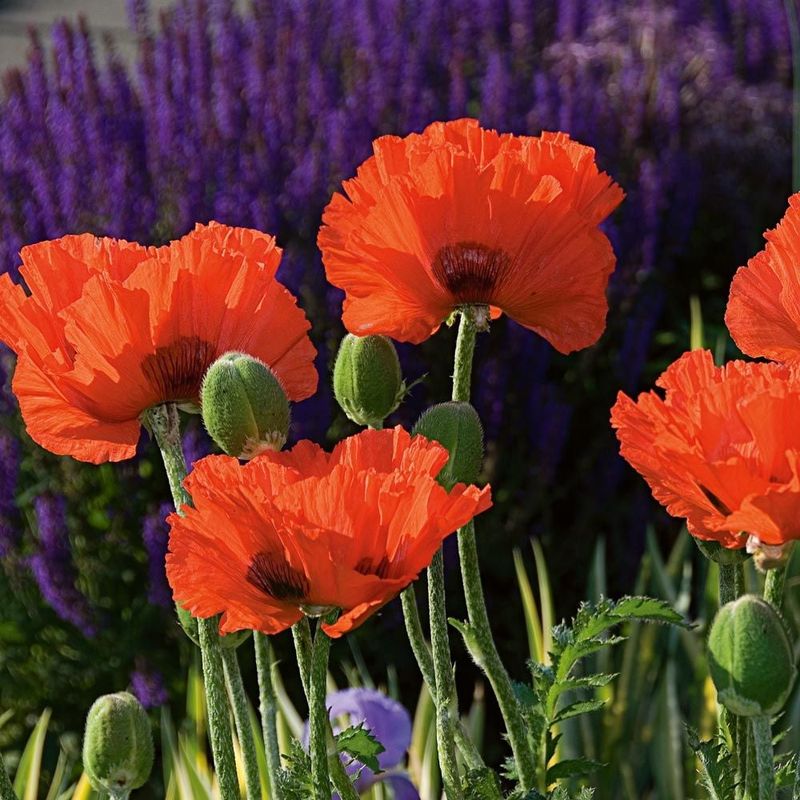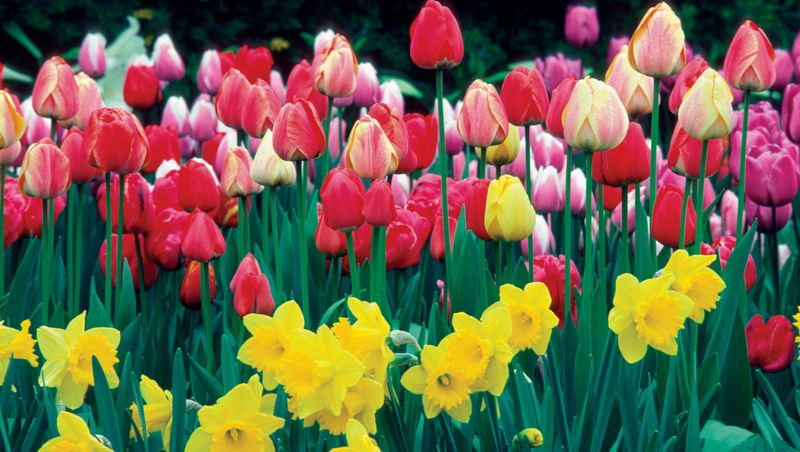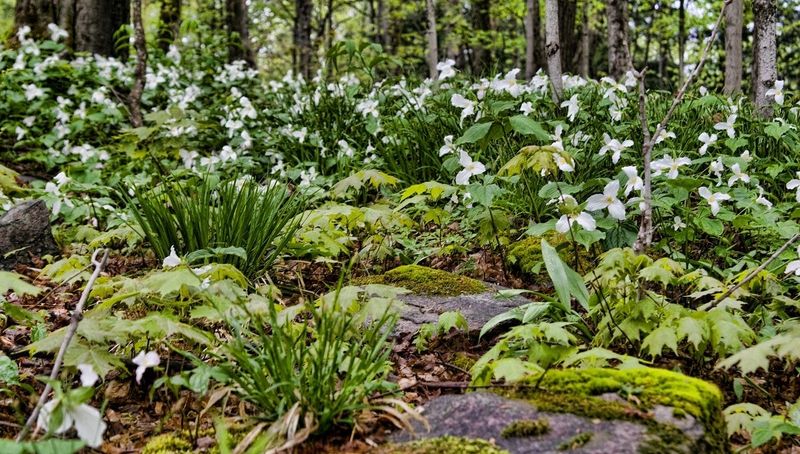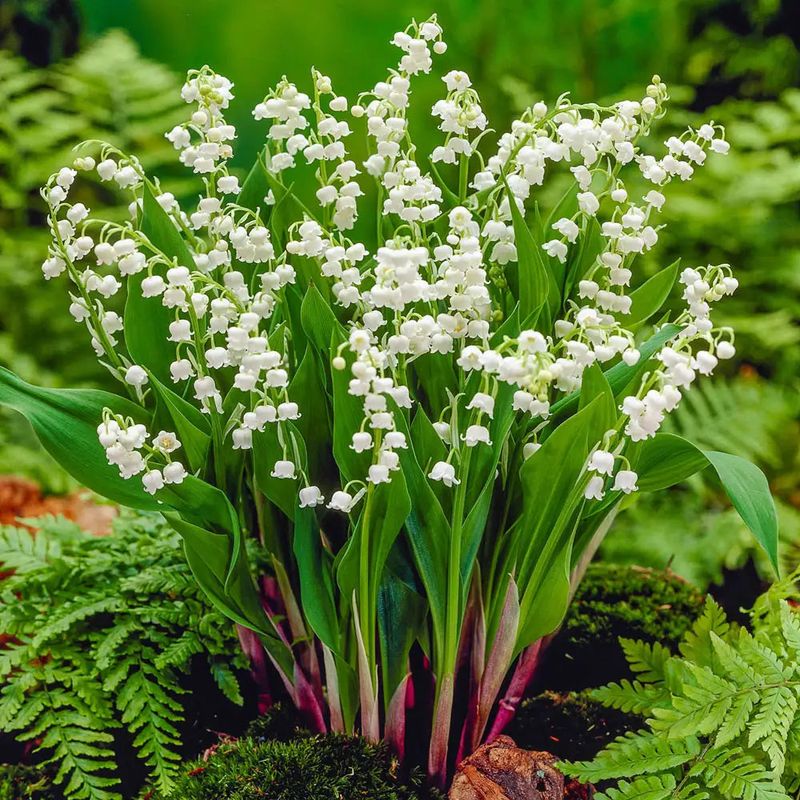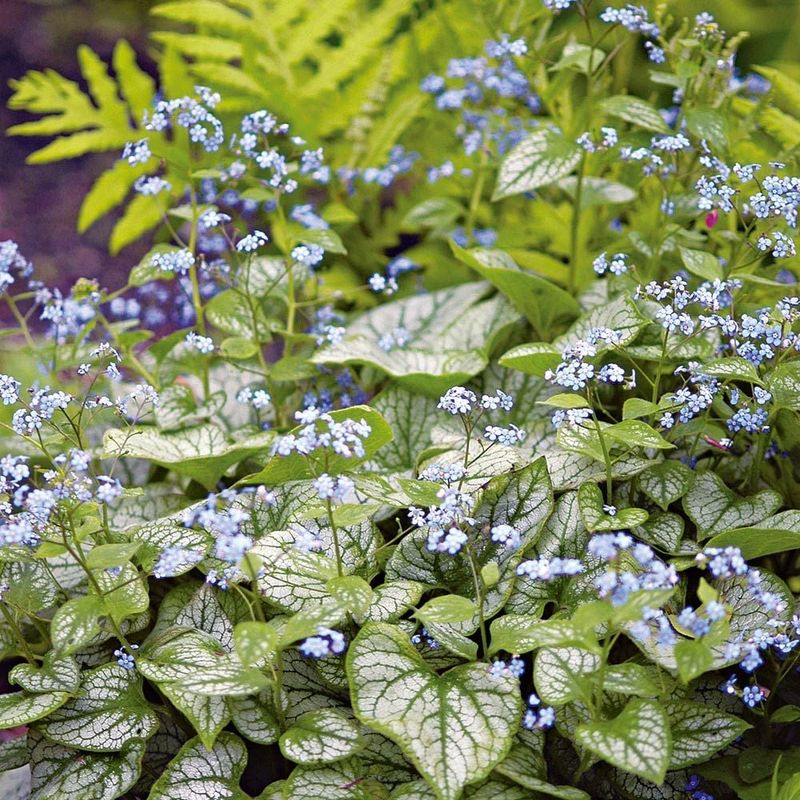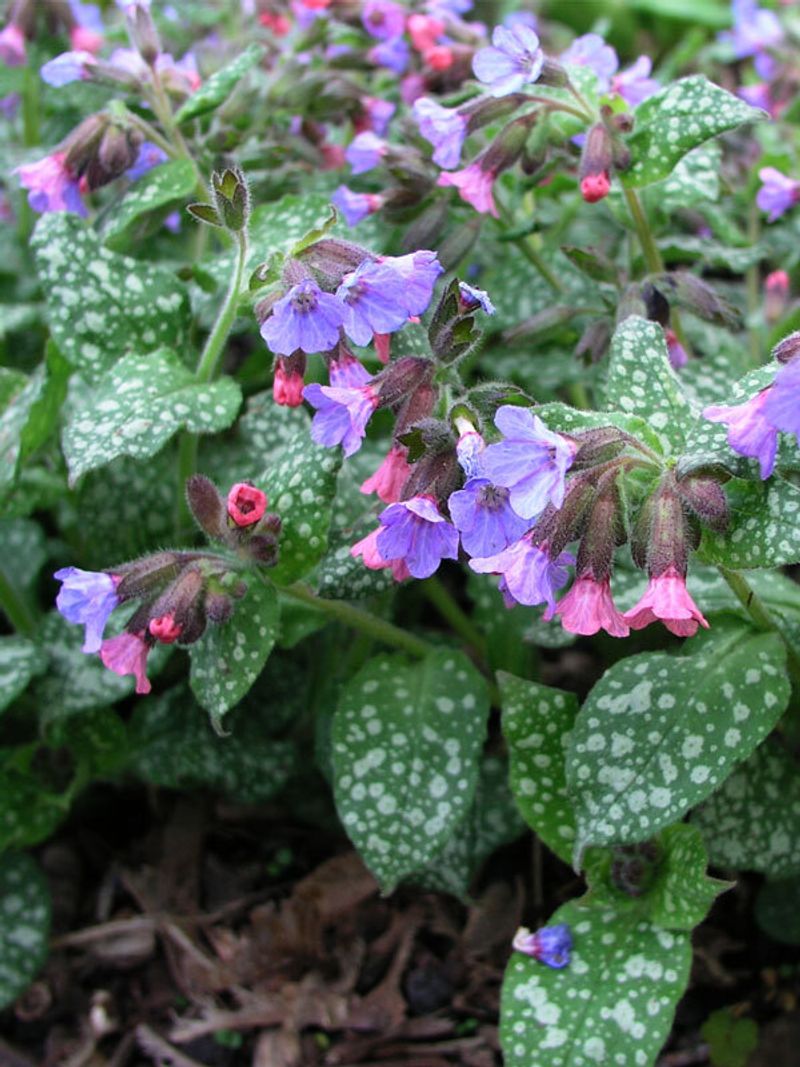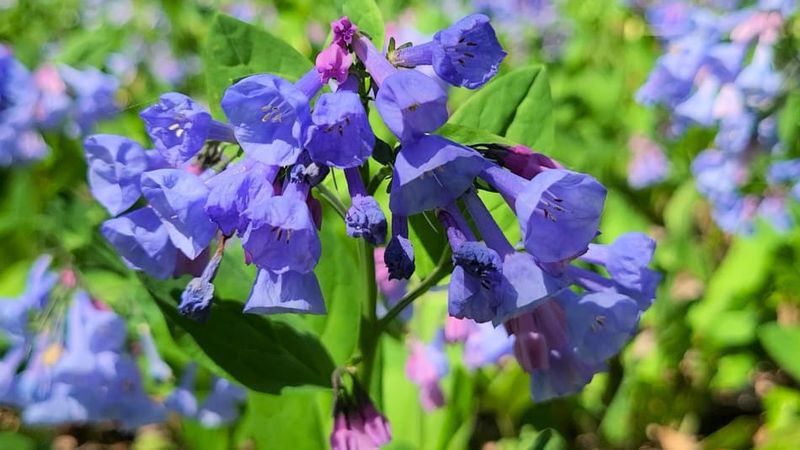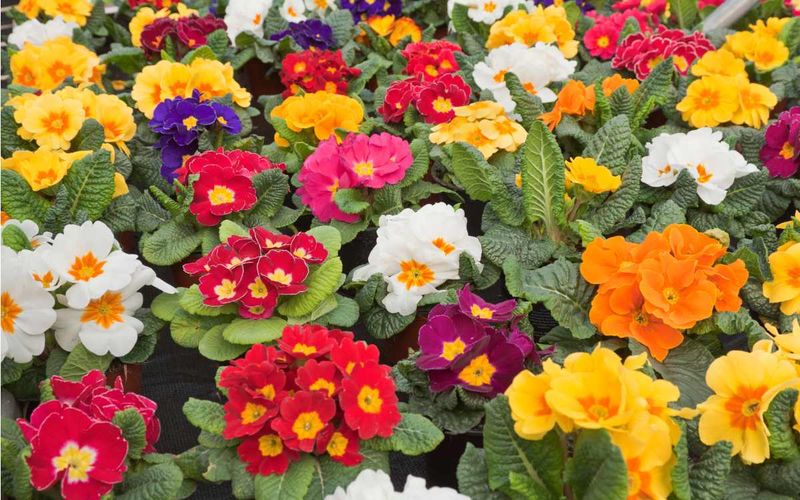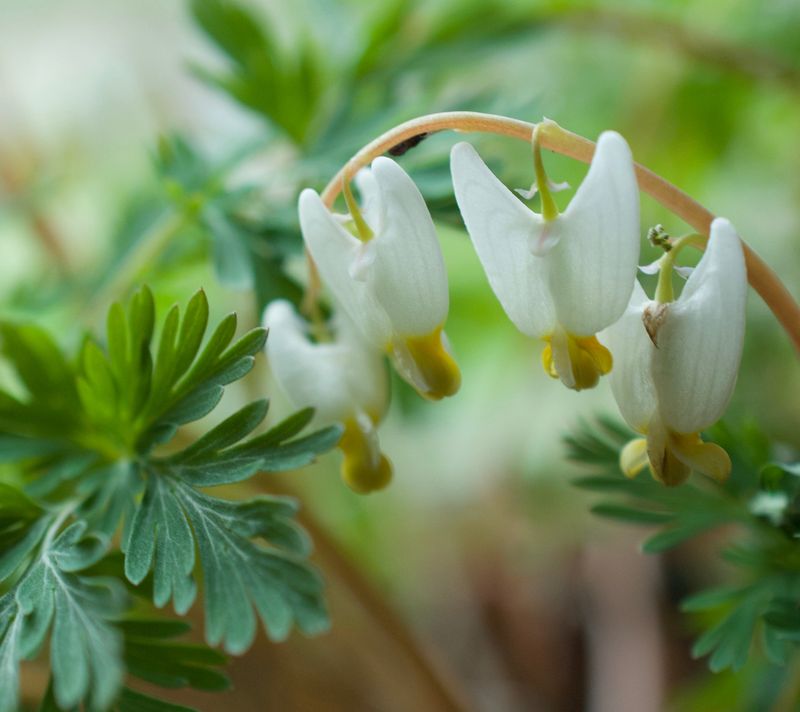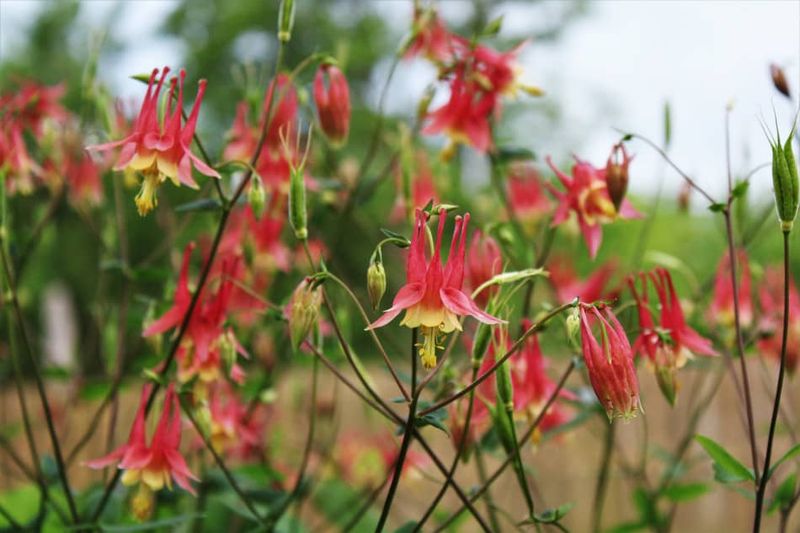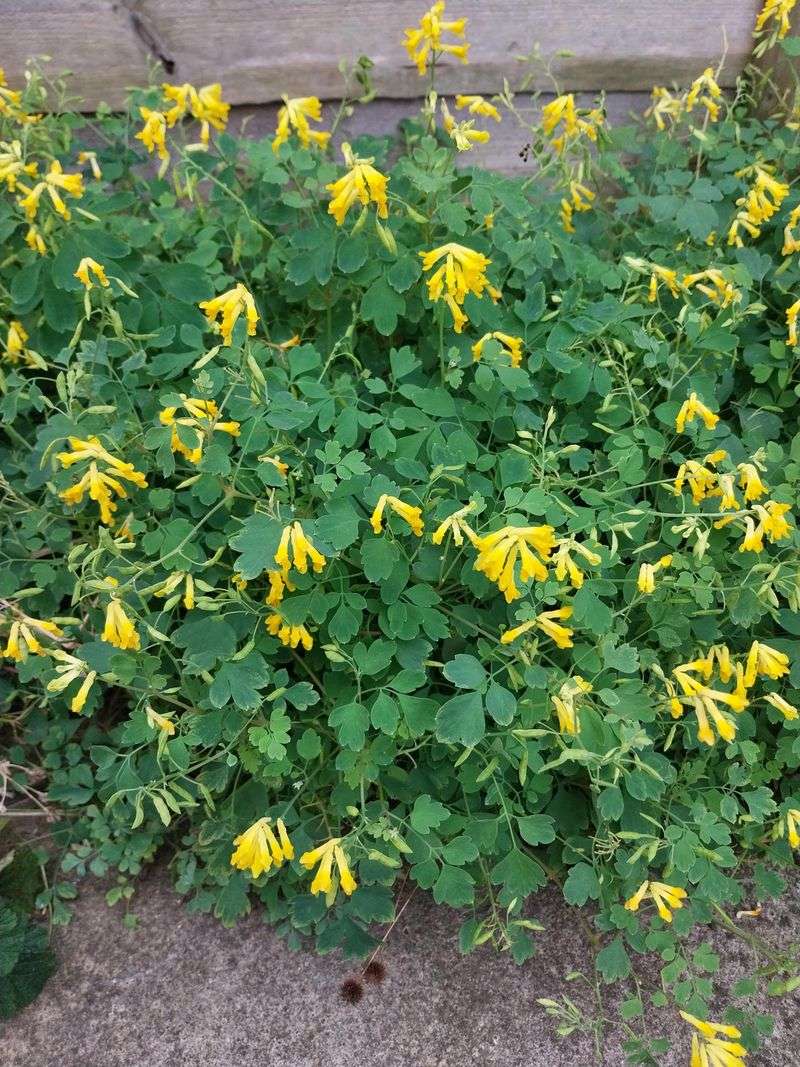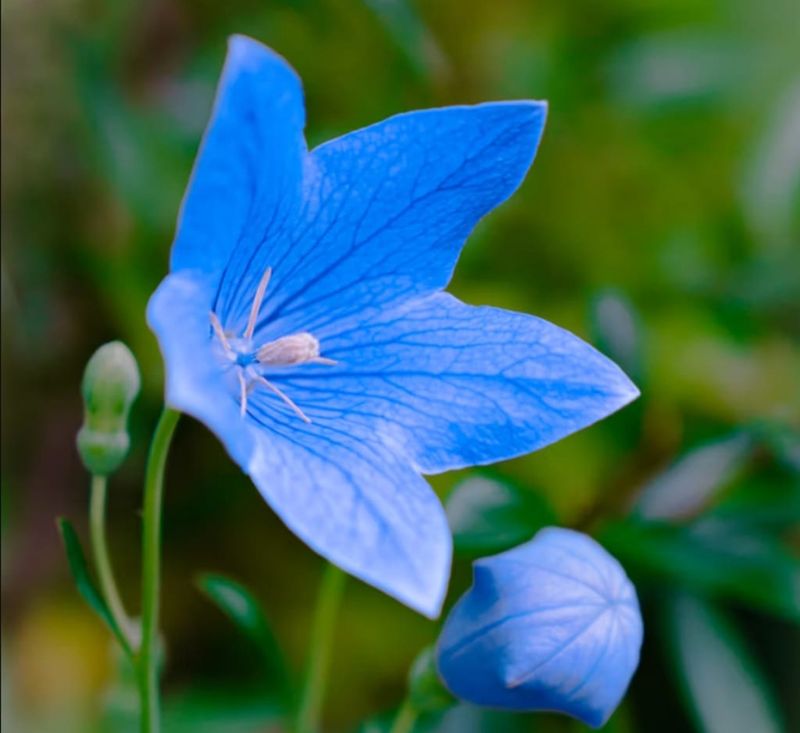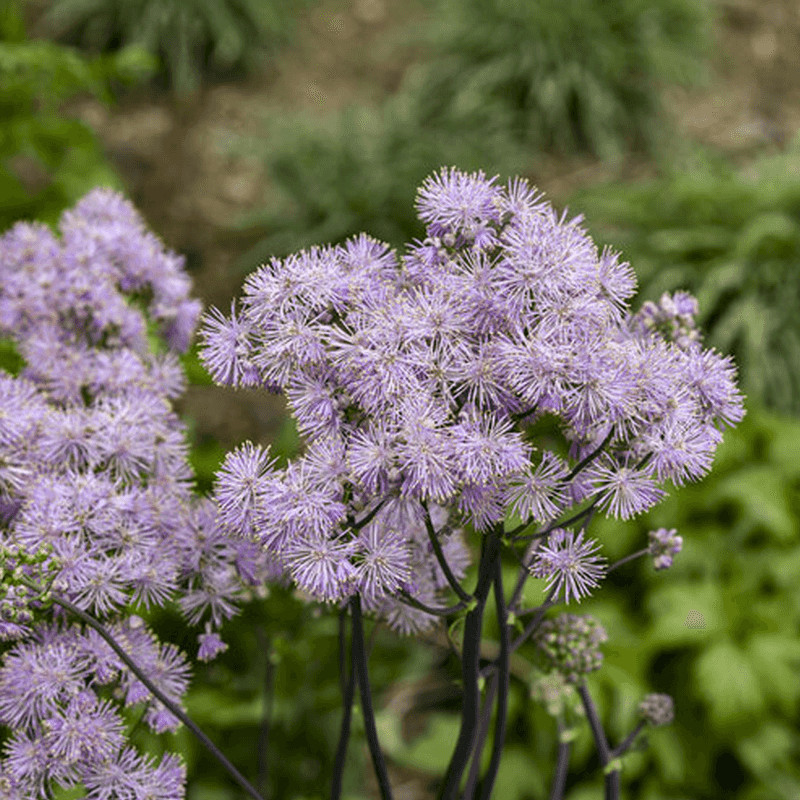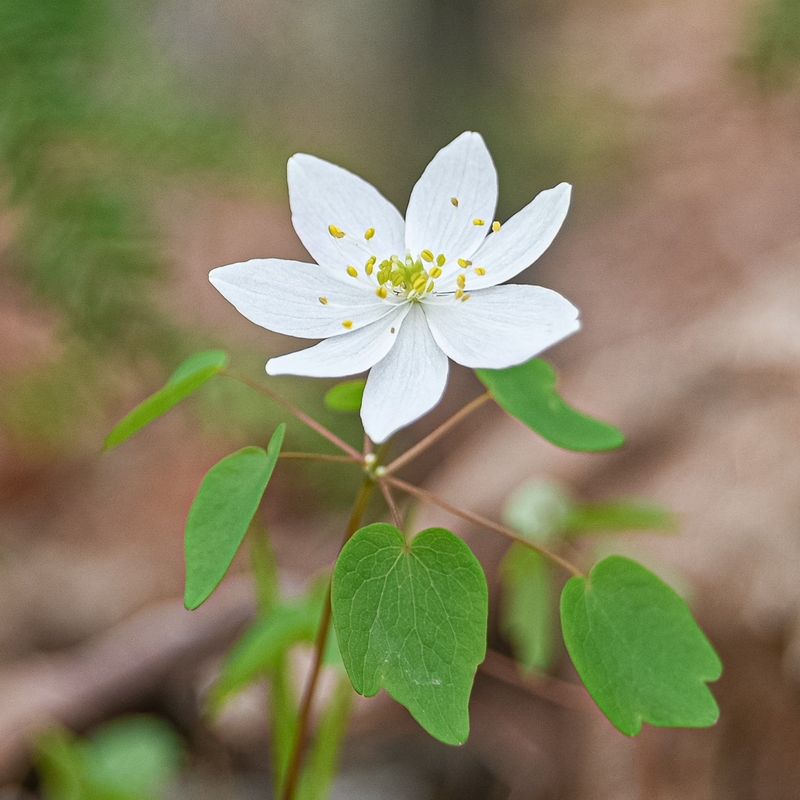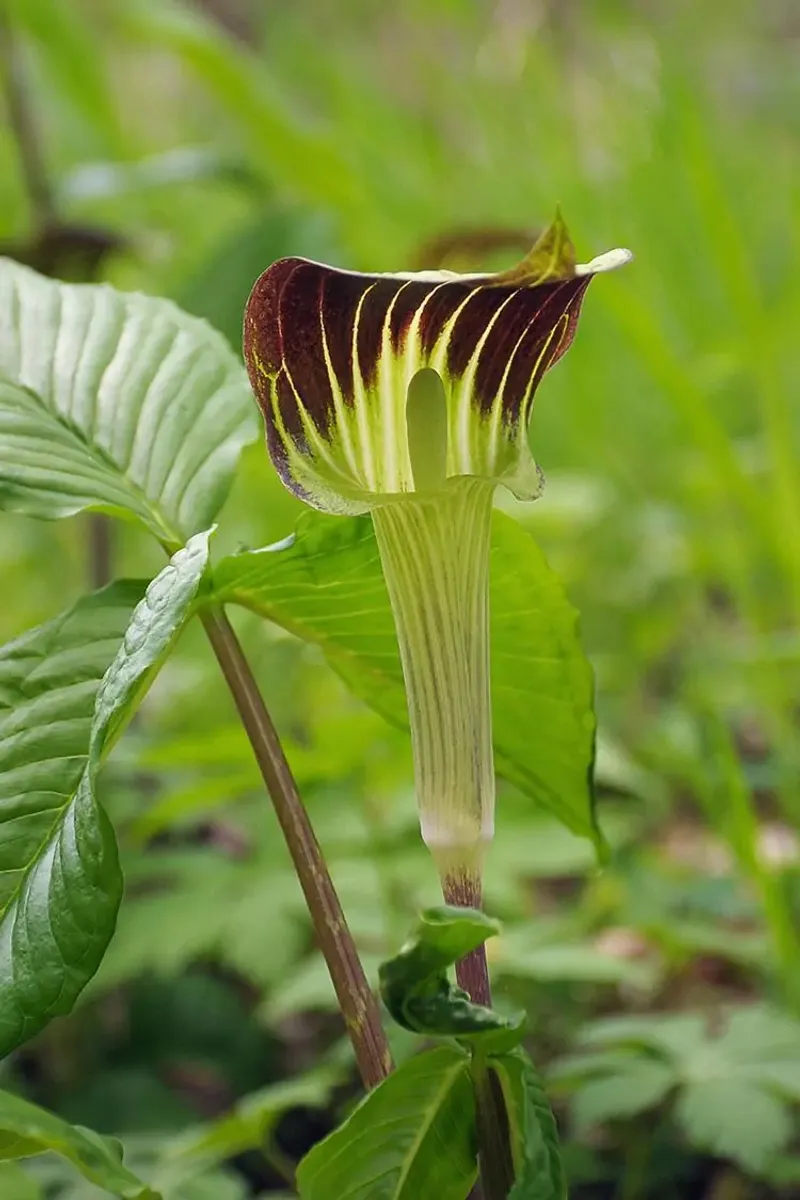Garden lovers know the joy of watching perennials return year after year, but some plants have a sneaky habit of vanishing just when you’ve grown attached to them. These disappearing acts might go dormant unexpectedly, die back completely, or simply fail to thrive after their initial glory. Understanding these fleeting beauties can help you plan your garden better and avoid the heartbreak of suddenly empty spaces.
1. Bleeding Hearts
Those heart-shaped pink or white blooms capture your attention in spring, creating a romantic display that’s hard to resist. By midsummer, though, the entire plant begins to yellow and wither away.
Bleeding Hearts go completely dormant when temperatures rise, leaving behind an empty spot where beauty once flourished. Many gardeners panic, thinking they’ve killed their precious plant.
Mark their location with a small stake so you don’t accidentally dig them up. Plant late-emerging companions nearby like hostas or ferns to fill the gap when Bleeding Hearts take their summer siesta.
2. Virginia Bluebells
Woodland gardens burst with their sky-blue trumpet flowers each spring, creating a magical carpet that seems too good to be true. And in a way, it is – Virginia Bluebells perform their spectacular show and then bow out completely.
The entire plant – flowers, leaves, and all – disappears by early summer. One day you’re admiring their beauty, and seemingly the next, they’ve vanished without a trace.
Pair them with later-emerging perennials like astilbe or coral bells to prevent bare patches. Their ephemeral nature makes them perfect for naturalizing under deciduous trees where summer shade would limit growth anyway.
3. Oriental Poppies
Few flowers make a statement like Oriental Poppies with their massive, tissue-paper blooms in fiery orange, red, or pink. Their dramatic appearance in late spring steals the show, making you fall head over heels for these bold beauties.
Just weeks after flowering, the entire plant collapses and disappears, leaving a gaping hole in your carefully planned garden. The foliage turns yellow, then brown, then simply vanishes until the following spring.
Smart gardeners plant catmint, baby’s breath, or tall sedums nearby to fill the void. The poppies will return next year – they’re just taking an extended summer vacation underground.
4. Spring Bulbs
Daffodils, tulips, and crocuses bring the first joyful colors after winter’s gloom. Their cheerful presence signals the start of the gardening season, lifting spirits and building excitement for the growing year ahead.
After flowering, their foliage must remain until it yellows completely – an unsightly process that tests gardeners’ patience. Once the foliage dies back, there’s no trace of these beauties until next spring.
Plant them among emerging perennials like daylilies, coral bells, or hardy geraniums that will expand and cover the dying foliage. This succession planting keeps your garden looking fresh as the seasons change.
5. Trillium
Woodland gardeners prize these three-petaled native treasures that emerge in early spring. Their distinctive triangular shape and pristine white, red, or yellow blooms feel like discovering forest magic.
By early summer, trilliums slip back into dormancy, disappearing entirely until the following spring. Their brief appearance makes them all the more precious to wildflower enthusiasts.
Growing alongside other woodland natives like ferns, wild ginger, and foamflower creates a natural succession of interest. Never pick trillium flowers in the wild – they take years to recover from such disturbance, and some species are threatened.
6. Lily-of-the-Valley
Sweet-scented bell-shaped flowers dangle along slender stems, filling May gardens with intoxicating fragrance. Lily-of-the-Valley’s pristine white blooms contrast beautifully with their glossy green leaves, creating a classic, elegant groundcover.
By midsummer, flowering has ceased, and as temperatures soar, the foliage often turns yellow and ratty. In hot regions, the entire plant may disappear until the following spring.
Appreciate them for their brief but beautiful moment, and plant late-emerging perennials nearby. Remember that all parts of this plant are highly toxic, so keep children and pets away despite their innocent appearance.
7. Brunnera
Heart-shaped leaves often splashed with silver create a stunning groundcover even before the sprays of tiny blue forget-me-not flowers appear in spring. Brunnera ‘Jack Frost’ and other silver varieties shine in shady gardens, brightening dark corners.
Hot, dry summer conditions cause the foliage to scorch, brown, and often disappear completely. What looked lush and full in May can become bare soil by August without consistent moisture.
Cut back damaged foliage to encourage fresh growth. Pairing with later-emerging or heat-tolerant shade plants like coral bells, ferns, or hostas ensures continuous interest even when Brunnera takes its summer break.
8. Pulmonaria
Spotted, silver-splashed foliage emerges early in spring, followed by clusters of flowers that magically change from pink to blue as they age. Also called Lungwort, these shade garden treasures provide early season interest when not much else is happening.
Summer heat often causes the foliage to decline dramatically. What was once a robust plant can melt away to almost nothing, especially in regions with hot, humid summers.
Cutting back ratty foliage sometimes encourages fresh growth. Plant pulmonaria where later-developing perennials like ferns, hostas, or heuchera can fill in the gaps when the lungwort decides to take its summer siesta.
9. Mertensia
Beyond the famous Virginia Bluebells, other Mertensia species like Mountain Bluebells create the same spring magic with their color-changing flowers that shift from pink to sky blue. Their nodding clusters transform woodland gardens into fairytale settings.
All Mertensia species are ephemeral, completely disappearing by early summer. Their here-today-gone-tomorrow nature can leave gardeners wondering if they’ve done something wrong.
Plant them where later-emerging perennials will naturally fill their space. Their complete dormancy actually makes them drought-tolerant, as they slumber underground during summer’s heat and dryness, emerging fresh when spring moisture returns.
10. Primroses
Early spring gardens light up with primroses in every color imaginable – cheerful yellows, rich purples, delicate pinks, and pristine whites. These bright blooms on short stems seem indestructible as they push through late snow and early spring rains.
Once summer heat arrives, many primrose varieties melt away completely. The rosettes of leaves turn brown and disappear, leaving gardeners wondering if they’ll ever return.
Most will come back if given proper conditions – cool temperatures, consistent moisture, and protection from harsh afternoon sun. Interplant with summer-blooming shade lovers like astilbe, tiarella, or Japanese forest grass to maintain interest when primroses retreat.
11. Dutchman’s Breeches
Finely cut, fernlike foliage emerges early in spring, followed by unique white flowers that truly resemble tiny upside-down pants hanging on a clothesline. Native woodland gardens come alive with these whimsical blooms that seem straight from a fairy tale.
By late spring, the entire plant disappears without a trace. The foliage yellows quickly after flowering, and within weeks, there’s no evidence they were ever there.
Mark their location to avoid disturbing the dormant plants. Combine with later-emerging natives like ferns, wild ginger, or woodland sedges to maintain coverage. Their early bloom provides critical nectar for emerging bumblebees when few other flowers are available.
12. Columbine
Delicate, spurred flowers dance above lacy foliage in late spring, with varieties ranging from native woodland types to showy garden hybrids. Columbines bring a touch of whimsy to gardens with their unique flower shape and nodding habit.
After flowering, the foliage often becomes tattered and unsightly, especially if leaf miners strike. Many gardeners cut them back completely, leaving an empty space where beauty once reigned.
Allow columbines to self-seed before cutting back, and you’ll be rewarded with new plants in unexpected places. Their fading act makes room for summer bloomers like coreopsis, black-eyed Susans, or salvias to take center stage.
13. Corydalis
Ferny foliage topped with tubular flowers in shades of blue, purple, yellow, or white brightens shady garden corners from spring into early summer. Blue-flowering varieties like Corydalis flexuosa create a cool, woodland feel that’s hard to achieve with other plants.
Summer heat causes many corydalis species to go completely dormant, vanishing until cooler weather returns. Blue varieties are especially prone to disappearing acts when temperatures climb.
Plant them where summer-interest perennials like hostas, ferns, or tiarellas will expand to fill the void. Some varieties may reappear for a second flush of growth in fall when temperatures cool, giving gardeners a welcome surprise.
14. Balloon Flower
Named for buds that swell like balloons before popping open into star-shaped flowers, these Asian natives bring reliable blue, pink, or white blooms to summer gardens. Their late emergence in spring often causes concern among new gardeners who fear they didn’t survive winter.
After flowering, cutting back can stimulate rebloom, but many varieties decline significantly by late summer. The foliage may yellow and disappear, especially in hot, dry conditions.
Mark their location with a small stake so you don’t accidentally dig in that spot. Pair with ornamental grasses, asters, or sedum that reach their peak as balloon flowers fade to maintain continuous garden interest through the seasons.
15. Meadow Rue
Airy plumes of tiny flowers hover above delicate, maidenhair fern-like foliage, creating a dreamy, ethereal effect in the garden. Tall varieties can reach 6 feet, bringing a cloud-like appearance to the back of perennial borders.
By late summer, many meadow rue varieties begin to decline, with foliage turning yellow and eventually disappearing. The once-substantial plants can shrink to almost nothing, especially in dry conditions.
Plant them where later-season perennials like asters, goldenrod, or ornamental grasses will fill the void. Some varieties may produce fresh foliage if cut back after flowering, extending their garden presence into fall.
16. Foamflower
Delicate spires of frothy white or pink flowers rise above attractive maple-like leaves in spring, bringing subtle beauty to woodland gardens. Native Tiarella species and their hybrids offer months of interest with their long bloom period.
Hot, dry summer conditions can cause foamflowers to go dormant, with leaves browning and disappearing until cooler, moister conditions return. What looked lush in May can vanish by August.
Consistent moisture and afternoon shade help prevent summer dormancy. Plant alongside ferns, hostas, or heuchera that maintain their presence through summer heat. Some varieties return with fresh foliage in fall when temperatures cool, providing multi-season interest.
17. Rue Anemone
Dainty white flowers dance above whorled foliage in early spring, bringing delicate beauty to woodland gardens. This native wildflower emerges alongside trilliums and bloodroot, creating a symphony of subtle spring blooms.
By early summer, rue anemone slips into complete dormancy, disappearing from view until the following spring. Their ephemeral nature makes them treasures to be appreciated during their brief appearance.
Companion planting with later-emerging natives ensures the garden remains interesting after rue anemone vanishes. Their early spring bloom provides essential nectar for emerging pollinators when few other flowers are available, making their brief appearance ecologically important.
18. Jack-in-the-Pulpit
Mysterious hooded flowers followed by bright red berry clusters make this native woodland plant a conversation starter. The unique flower structure resembles a preacher (Jack) standing in his canopied pulpit, giving the plant its charming common name.
After fruiting, the entire plant disappears by midsummer. The unusual flowers, distinctive three-part leaves, and bright berries vanish without a trace until the following spring.
Plant among later-emerging woodland perennials like ferns, wild ginger, or woodland sedges to maintain garden interest. Their dormant period coincides with the driest part of summer, allowing them to avoid drought stress by retreating underground.

